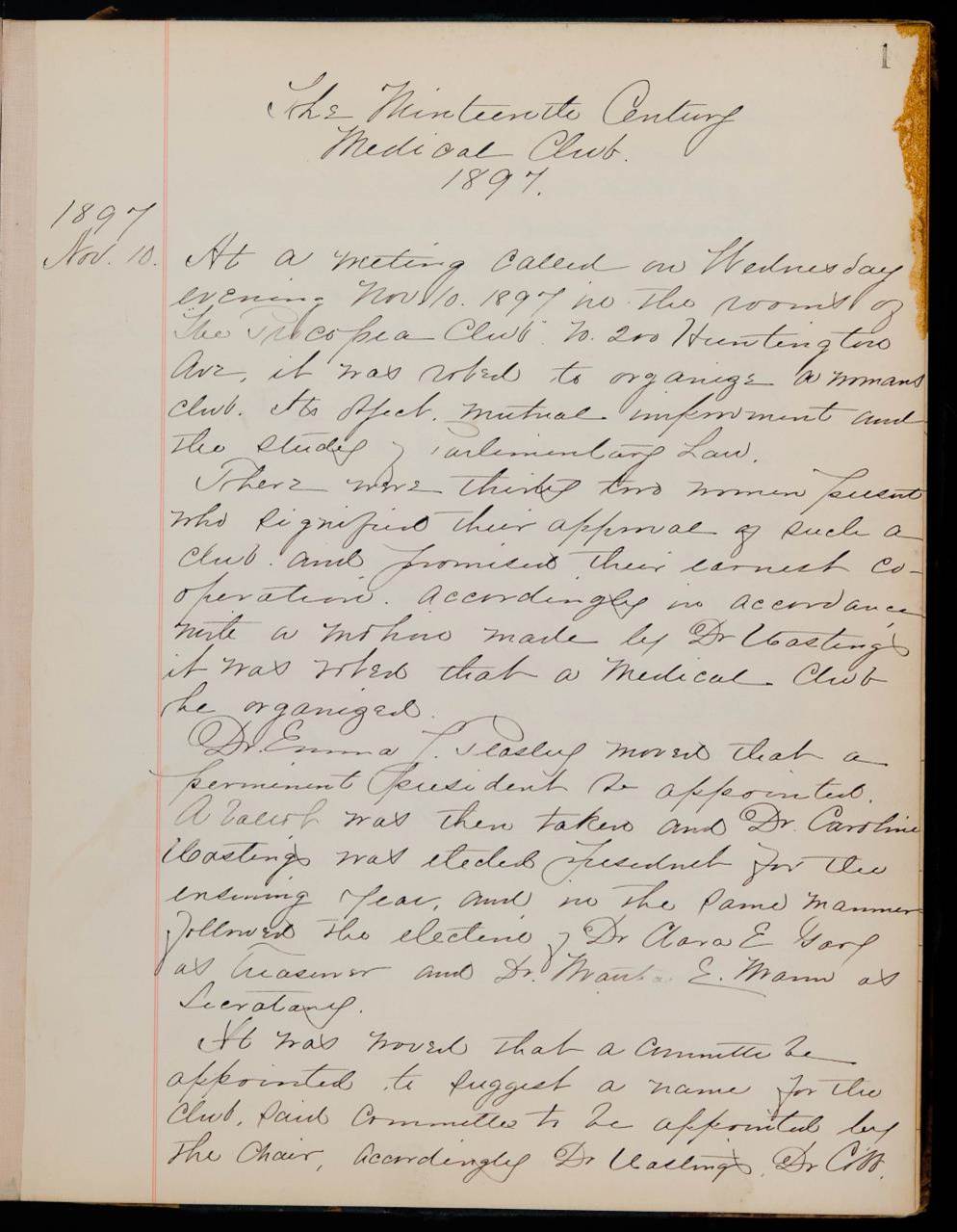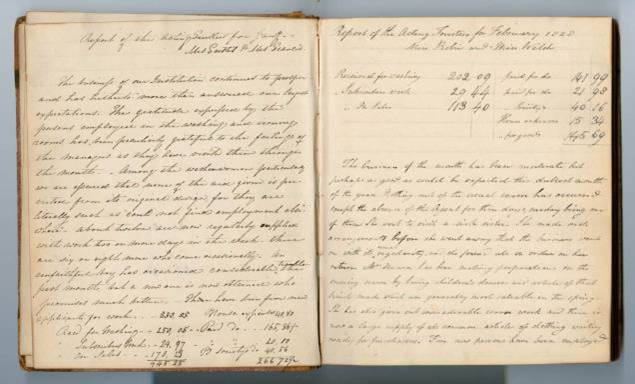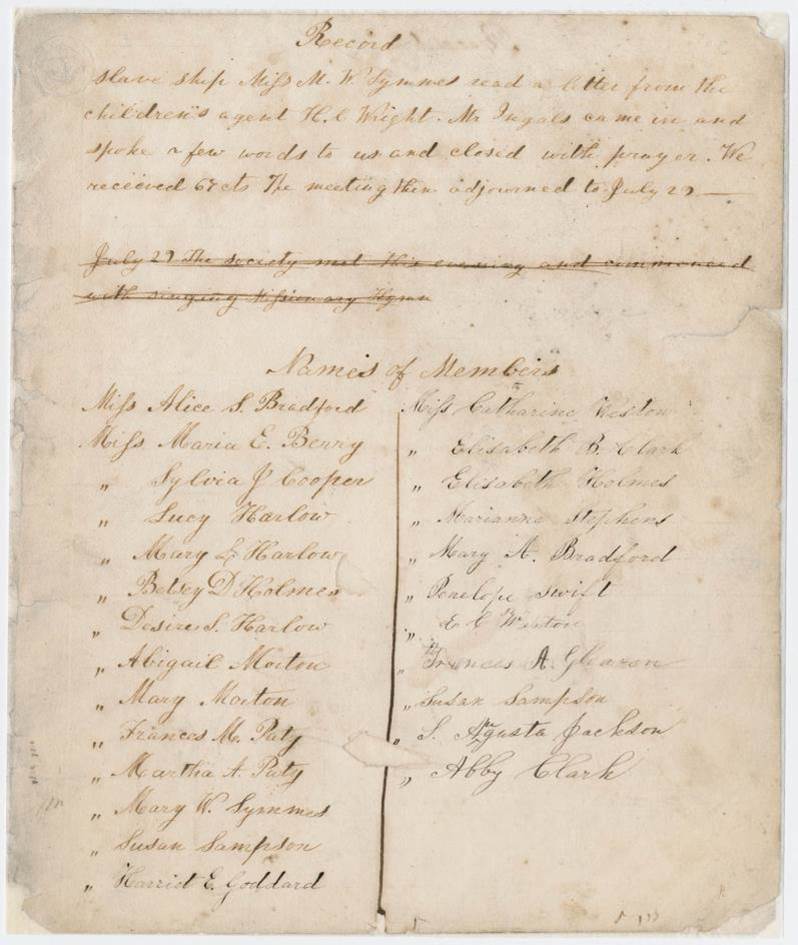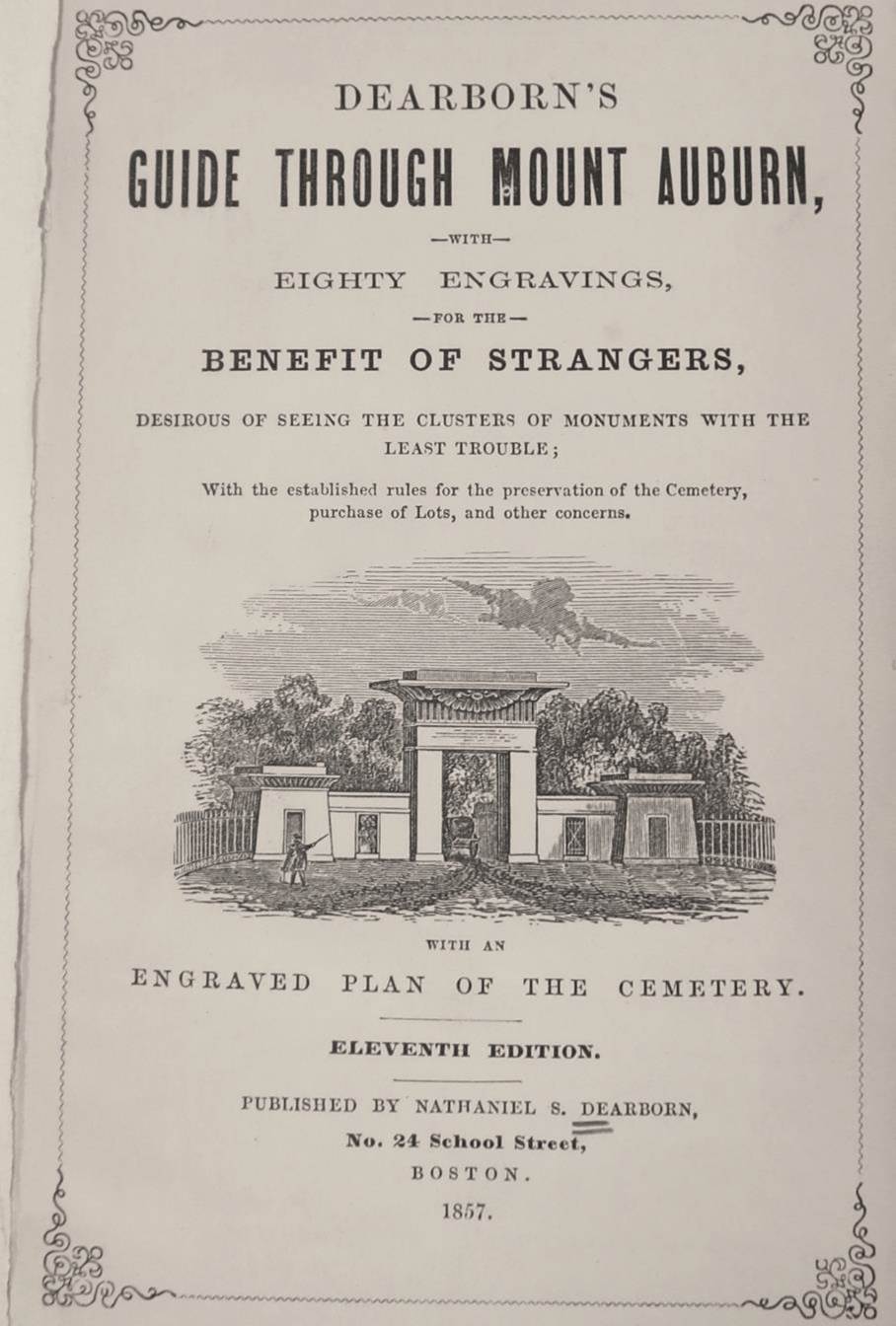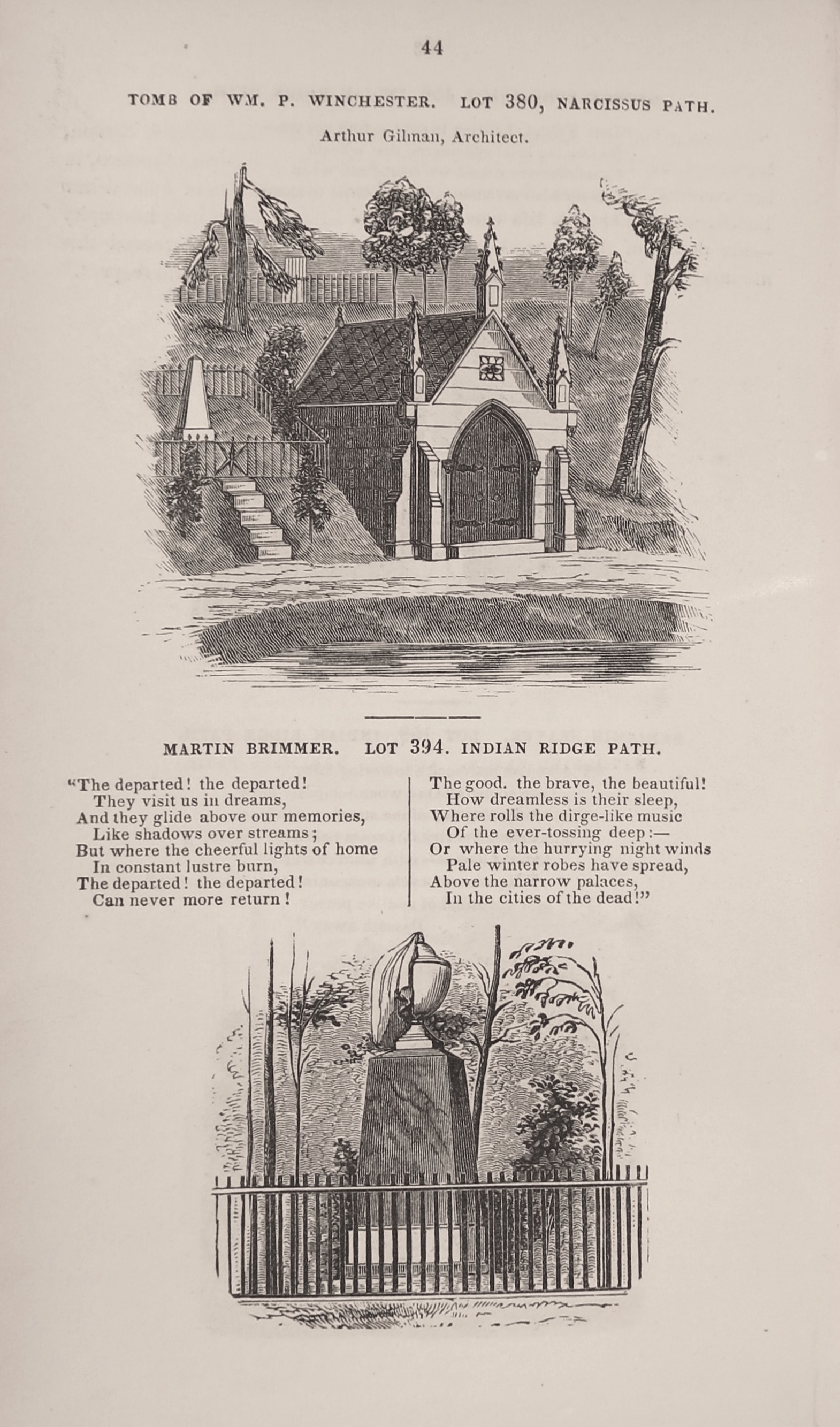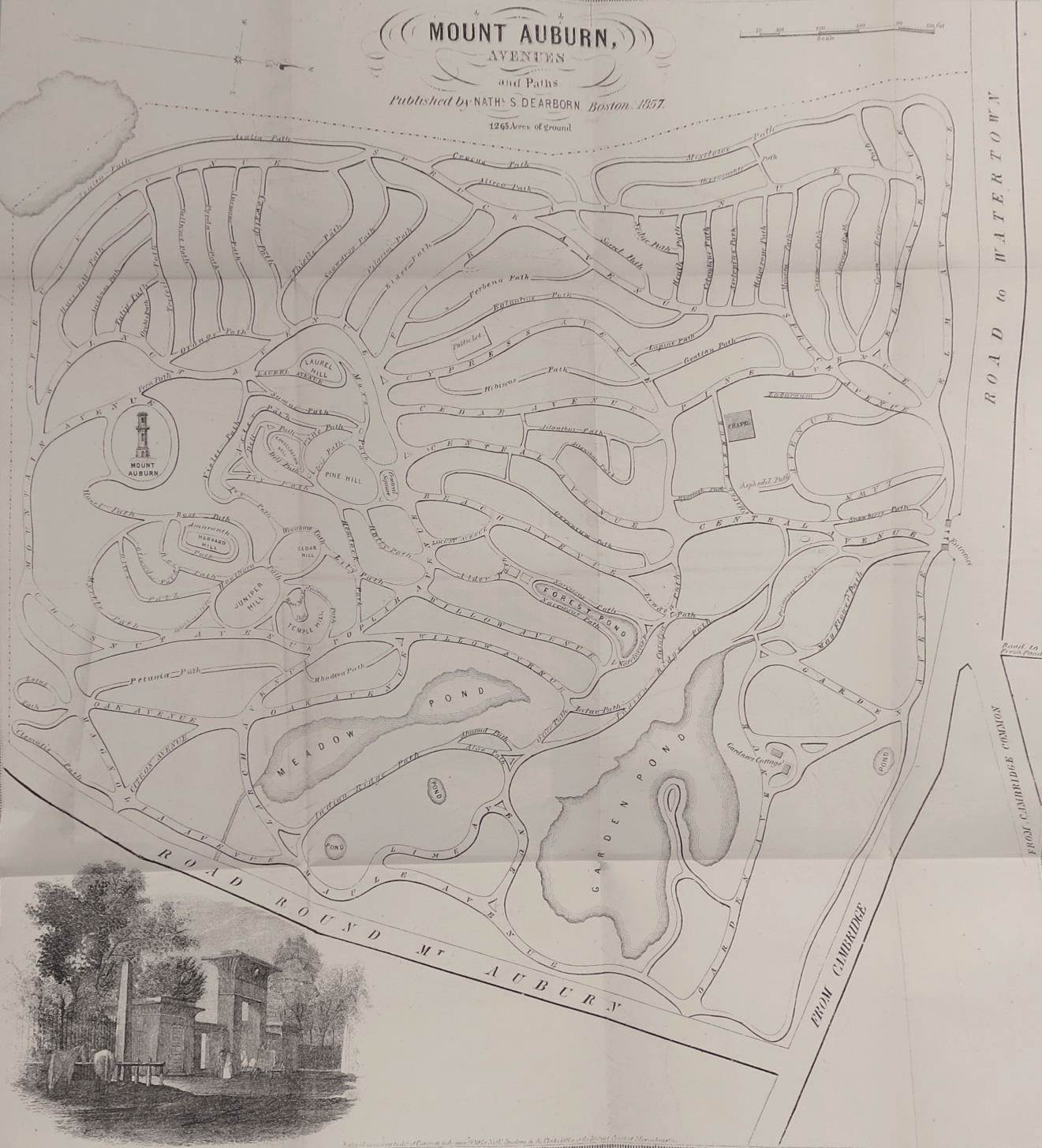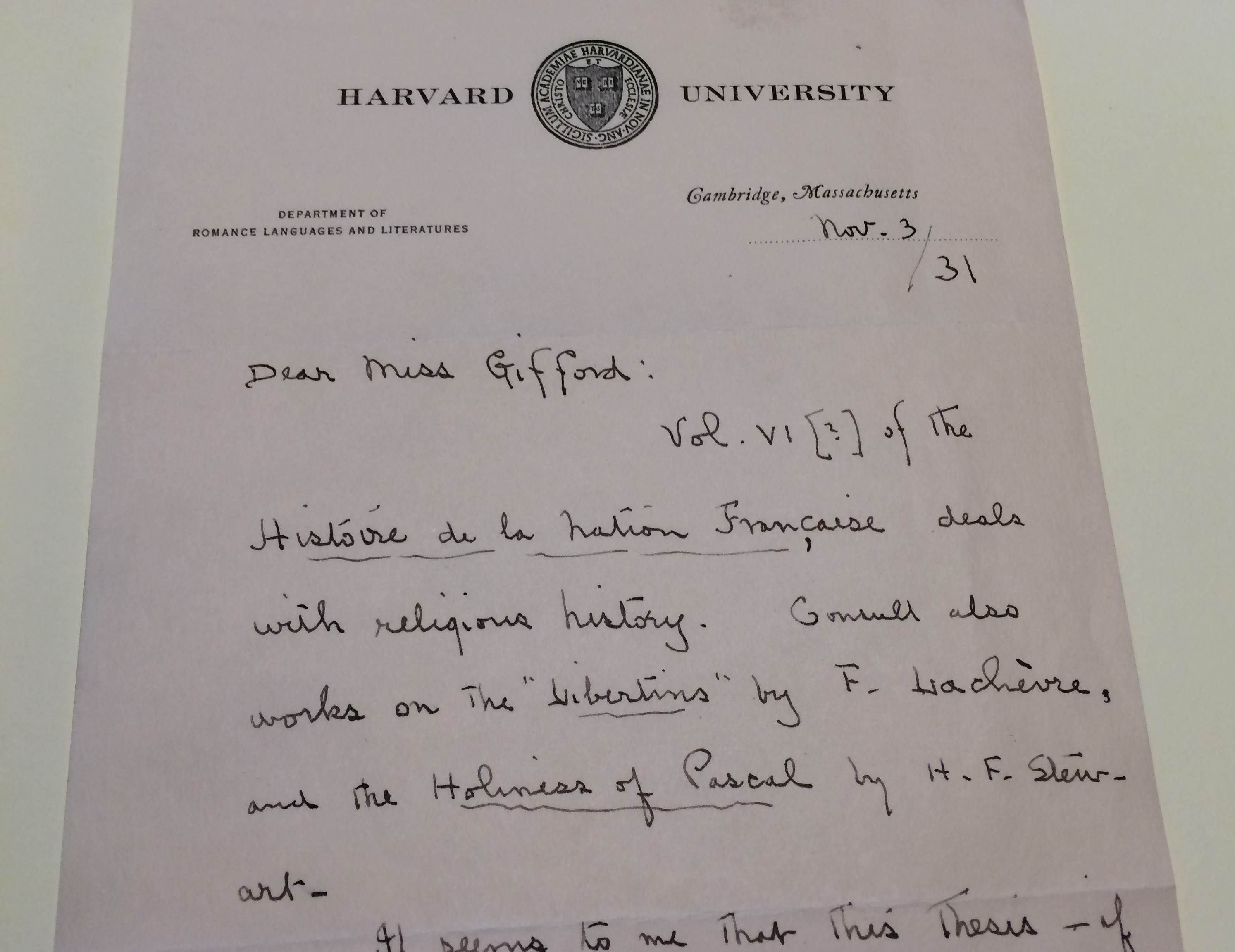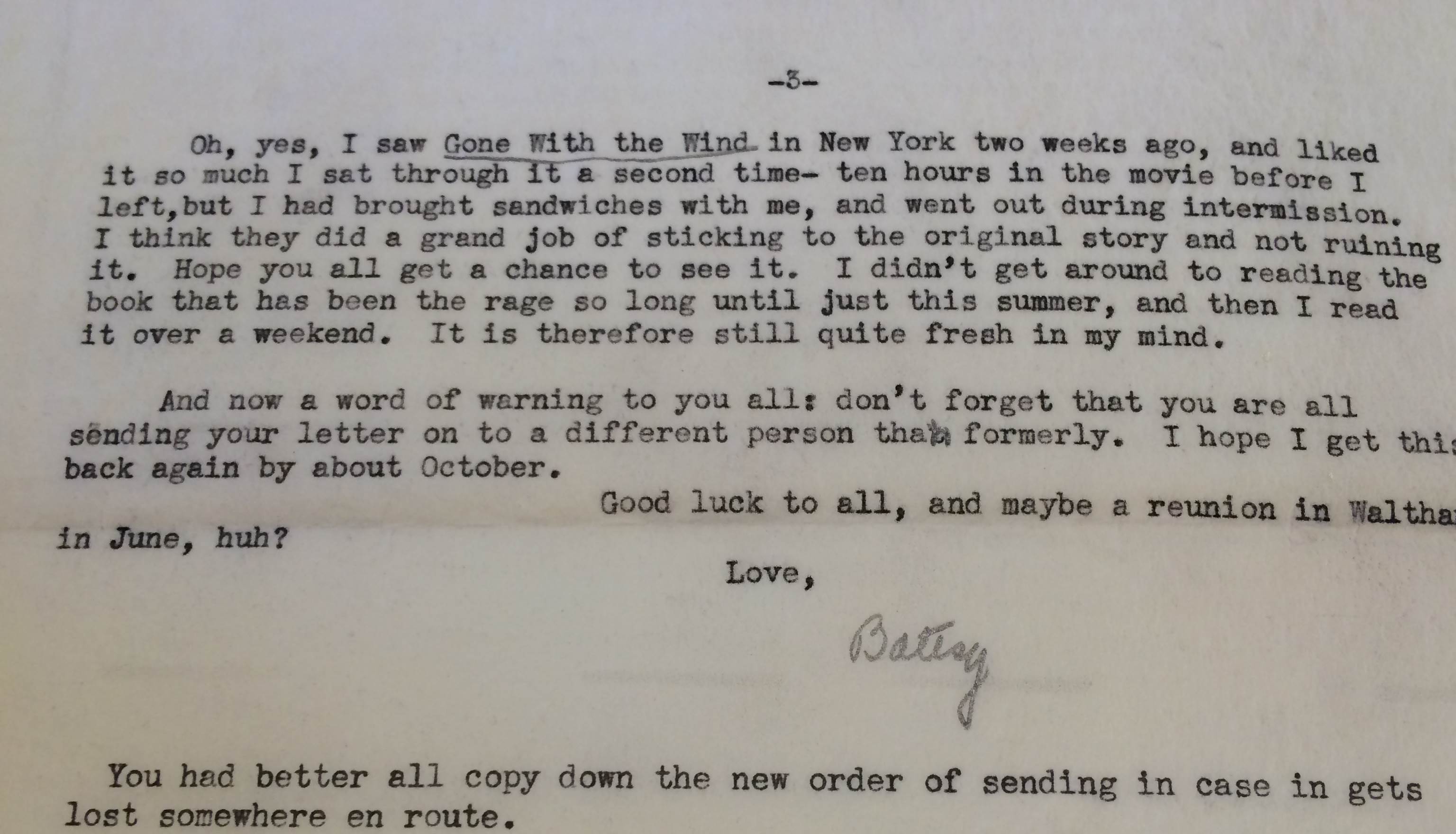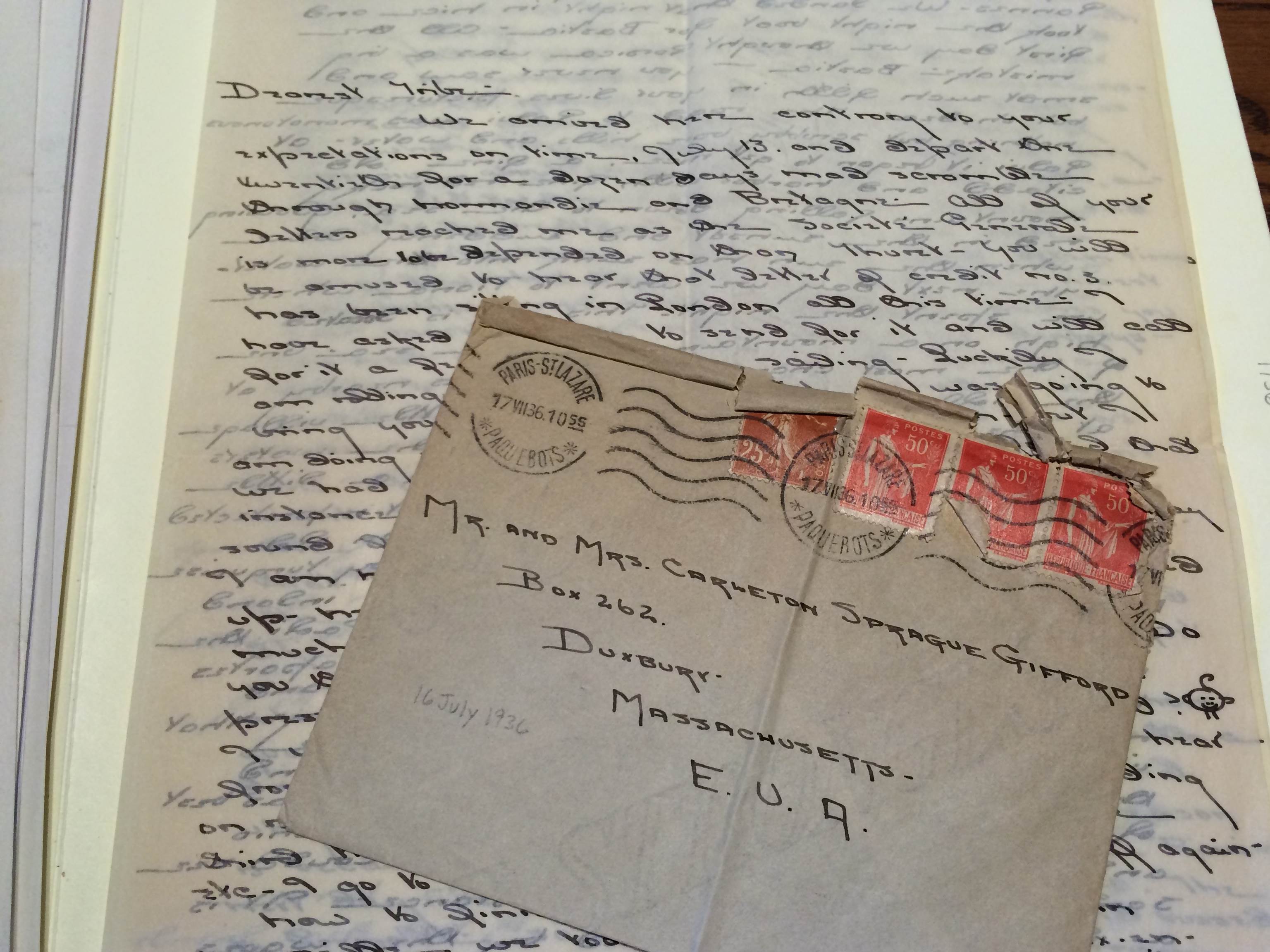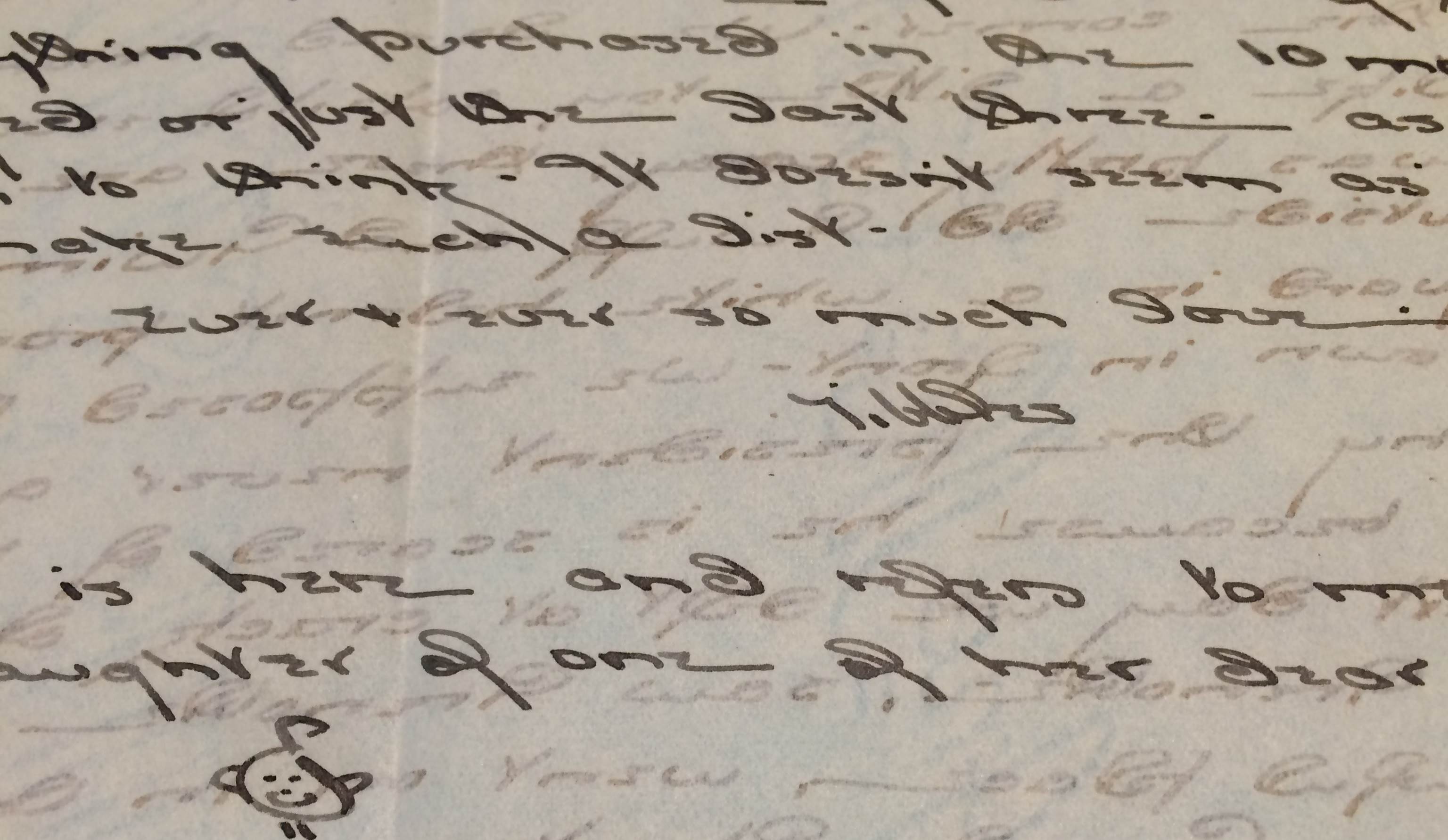By Rakashi Chand, Reader Services
I love Halloween, so when I saw these lovely India ink sketches in our Graphics collection I was thrilled! Sketches Here and There by Franklin B. Gardner portray the fun and frolic of Halloween almost 150 years ago. Amazingly, this is exactly what I had hoped and envisioned Halloween would have been like in the past; almost a ‘Dicken’s-like’ visual representation of what could be ‘A Halloween story’. Young people frolicking and enjoying a lovely morning in a cornfield followed by festive evening party, where guests clad in costumes have gathered to celebrate.
Although Halloween was celebrated elsewhere in various ways, modern Halloween is a distinctly American capstone holiday, whose traditions and celebration have permeated throughout the rest of the world. These images portray the holiday as a joyous occasion, celebrating autumn, the most beautiful season in New England. And what could be more idyllic than Halloween in the corn fields of New England in 1874?
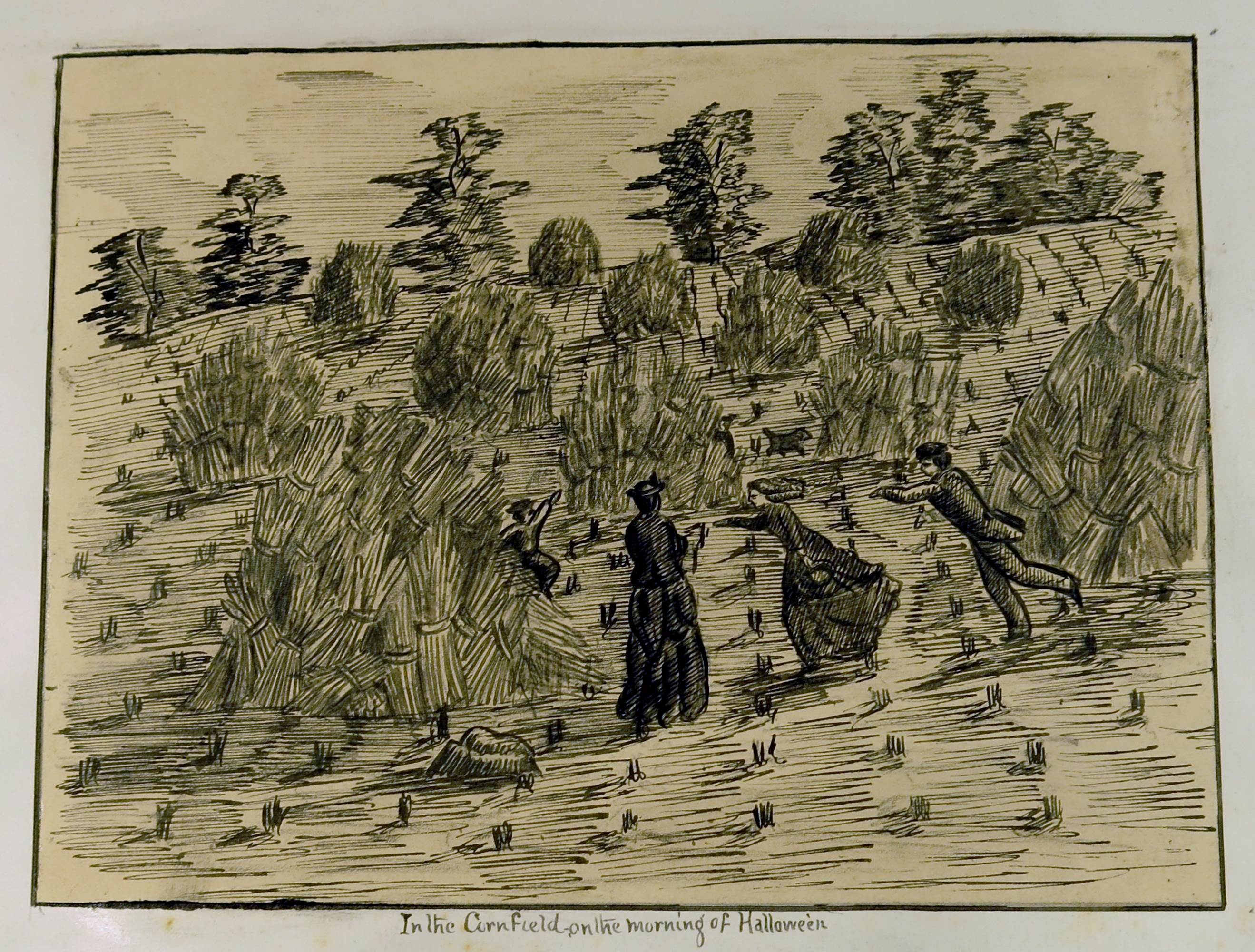
In the Cornfield, on the Morning of Halloween
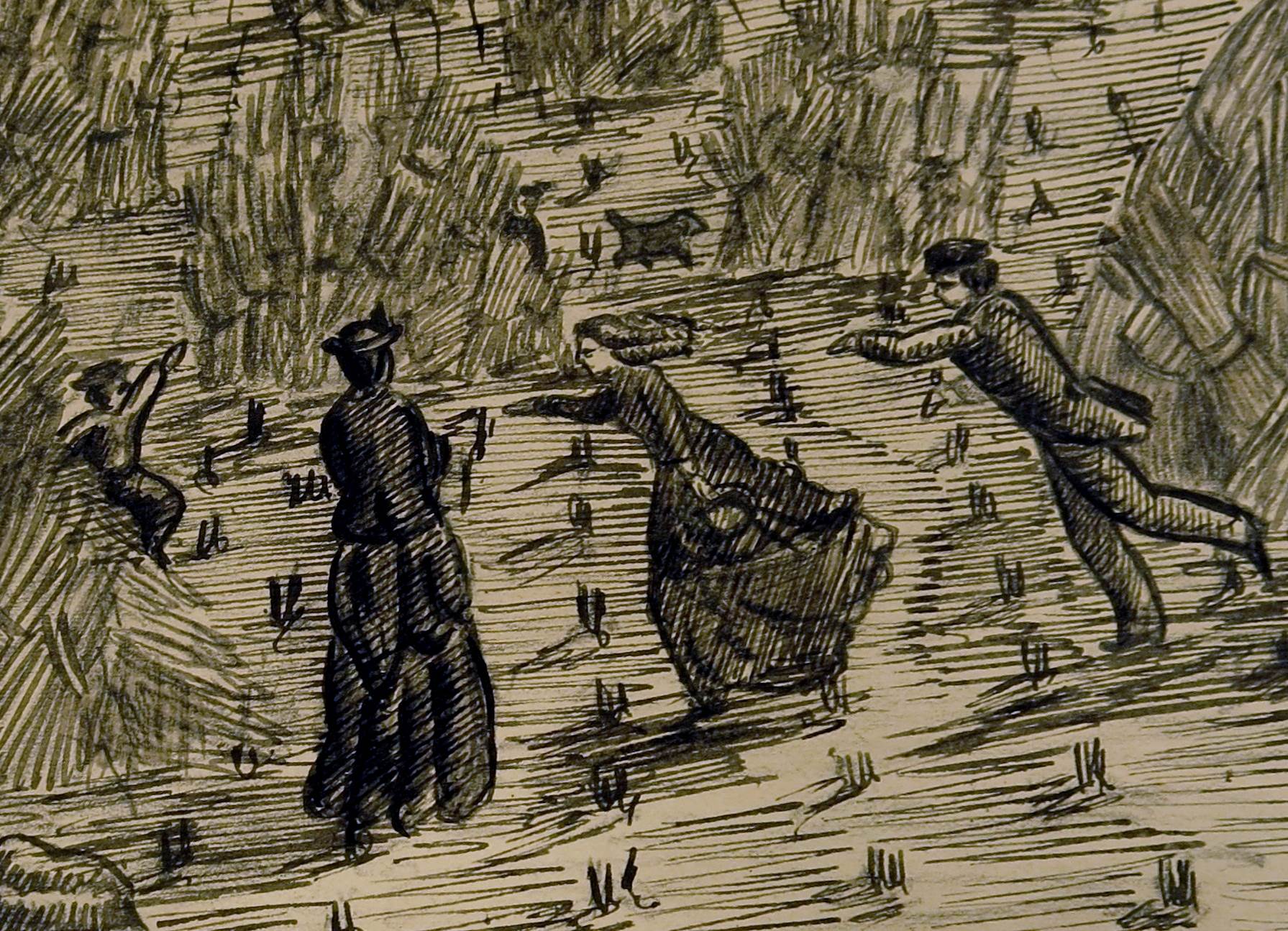
In the Cornfield, on the Morning of Halloween, detail.
As the Halloween season is upon us, these visions of Halloween past are a delight to examine. The food being laid out on the dining table during the gathering signifies that perhaps the celebration of Halloween involved a gathering or a feast among friends and family. The holiday has evolved over the years in such a way that we no longer enjoy the gathering and dinning that were once a part of Halloween celebrations. Modern Halloween celebrations puts much emphasis on ‘trick-o-treating’ and candy, so perhaps it is time to bring back the tradition of a gathering with friends and family. Let’s celebrate the season and enjoy the beauty of autumn days, and then feast on Halloween night! [Homemade costumes optional.]
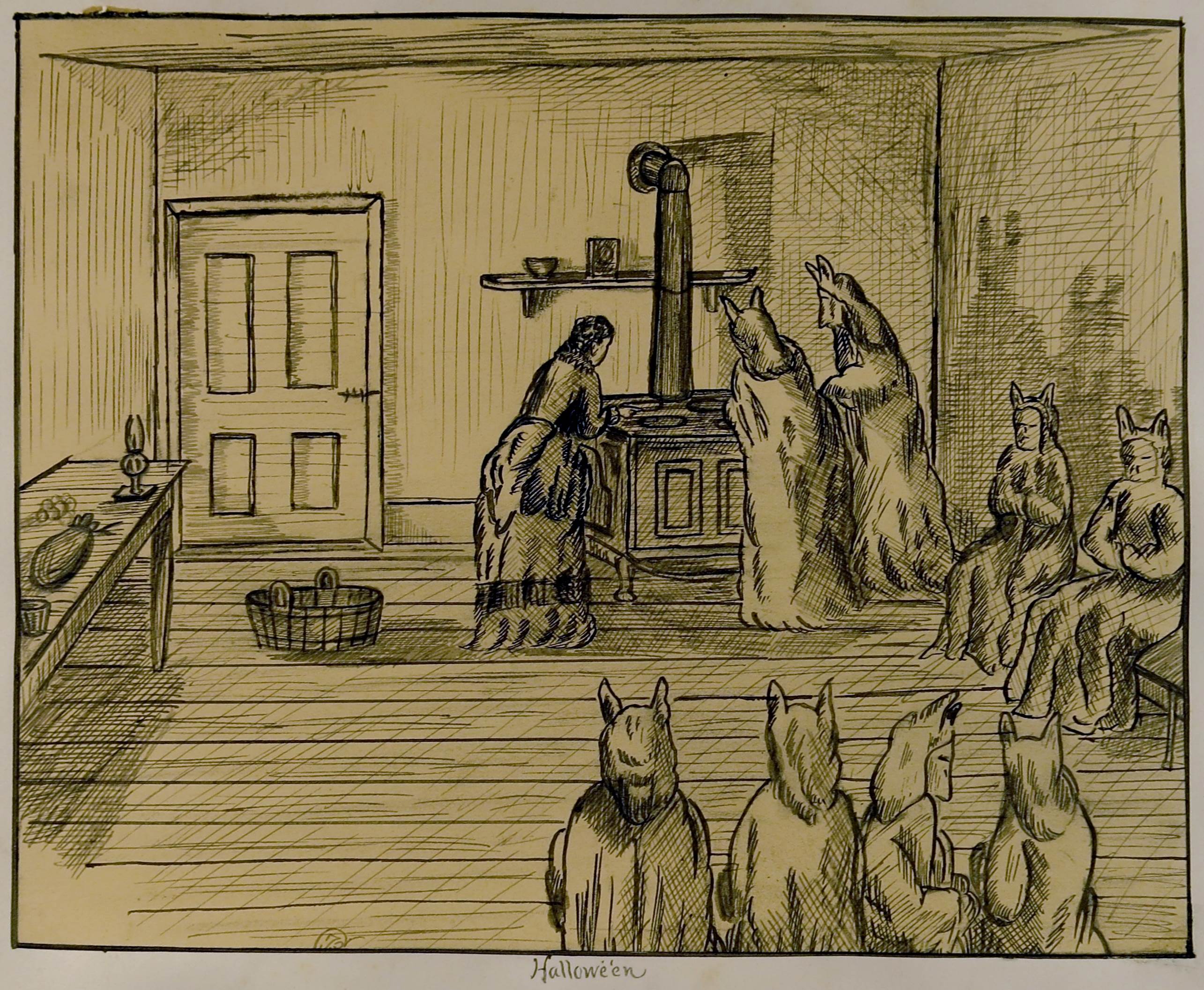
Hallowe’en

Hallowe’en, detail.
These beautiful sketches were done by amateur artist Franklin B. Gardner and given to the MHS in 1969 by Hermann Warner Williams, Jr. The collection consists of 16 pen and ink sketches and an illustrated title page. The subjects of the sketches are various social scenes, customs and activities and pastimes from the Boston area. We hope to be able to share each of these fabulous sketches with you in forthcoming blog posts.
Halloween in America
To quote Lisa Morton’s Trick or Treat: A History (Reaktion Books, 2012), how did Halloween go from being “An Autumnal party for adults” to “a costumed begging ritual for children”? The now heavily commercialized holiday has been exported from America to every part of the globe. Halloween has a very long and complex history, drawing on the traditions and customs of many cultures, a true amalgamation, which continues to evolve to this day.
Halloween is associated with death, although our relationship with and perception of death has changed along with the traditions of the holiday; thanks to advances in modern medicine, death is marginalized, which creates a fear of the unknown. Halloween has become a day when society indulges in fear. Halloween was a holiday for mischief, especially for young boys, who enjoyed playing pranks through the night. Costumes were also a part of Halloween as exemplified by the ‘Hallowe’en’ sketch. But the biggest change in Halloween is the disappearance of the gathering and dinning, especially among adults. It was once a celebration of the season, when both the food and the theme of the party revolved around the bountiful fall harvest, with an emphasis on pumpkins and apples. It was not until after WWII that candy and Trick-or-Treating became a part of Halloween, indeed prior to that even candy manufacturers did not associate candy with Halloween. It was not long before Trick-or-Treating and the distribution of candy on Halloween night became mandatory customs.
More ‘spooky’ Halloween treats from the collection of the Massachusetts Historical Society:
– The Salem Witch Bureau: A beautiful piece of American joinery that was part of the Salem witchcraft trials, General William H. Sumner described this chest of drawers as “the Witch Bureau, from the middle drawer of which one of the Witches jumped out who was hung on Gallows Hill, in Salem.”
– Diary entry of Salem Witchcraft Trial judge Samuel Sewall,19 September 1692.
– Examination of Geo. Burroughs 1692 May 9-11. By Samuel Parris: Proceedings of the examination of Geo[rge] Burroughs and the testimony of bewitched girls, 9-11 May 1692, during the Salem witchcraft trials. Burroughs was found guilty and executed for witchcraft.
– A True Narration of the Strange and Grevous Vexation by the Devil of Seven Persons in Lancashire, and William Somers of Nottingham, by John Darrel: This is the only item in our catalog with the subject “Demoniac possession.”


